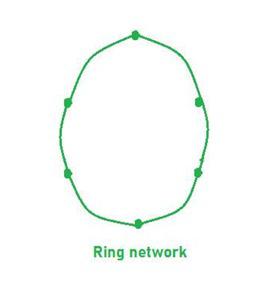Interconnection Networks For Parallel Processores
Last Updated :
11 Sep, 2023
In parallel computing, Interconnection networks are very crucial for efficient communication among all processors within a similar system. There are two main approaches for interconnecting these processors static high-speed high-speed interconnection network and Dynamic interconnection network.
Understanding Interconnection Networks
High-speed represents a single processor or memory module or even a group of processors. High-speed computer Networks aim to provide fast and efficient performance(communication) among the nodes. The infrastructure supports high bandwidth and low latency.
There are two types of Interconnection Network
Static Interconnection Network
Static interconnection networks are fixed. In a unidirectional static interconnection network connections between nodes allow communication to occur in only one direction. So the data can be transmitted from one node to another node but not in the reverse direction. However, in a bidirectional static interconnection network, the connection between nodes allows communication to occur in both directions. The choice between both connections depends on the specific requirements of the parallel computing system.
There are also two type of Static Interconnection Network
Completely/Fully Connected Network

Complete connected network 1.1
- Connectivity: Here each node connected to every other node in the system, means that there is direct connection between any pair of nodes.
- Bandwidth and Latency: So here is the highest degree of connectivity. Advantages of fully connected network are low latency and high bandwidth.
- Cost and Complexity: As the number of wire require more here so the it is expensive and It is much complex also
- Data Transmission : Since there are direct connections between processors , data can be transmitted quickly and efficiently.
- Number of Links : Number of links are required here is n(n-1)/2 . Here n = 6 , so total links will be 15 and each node link with (n-1) = (6-1) = 5 another nodes.
Limited Connection Network
It also known as partial network, each node is connected by a subset of other nodes. It offers advantages such as reduced cost and complexity, optimized communication pattern and improved scalability. But they might be introduce limitations in terms of bandwidth and fault tolerance compared to Completely or Fully connected network.
Examples
- Ring Network
- Tree Network
- Linear array Network
- Mesh Network
- Hypercube Network
Linear Network
In a liner network every system is connected linearly or in single row fashion where if one system fails every system afterwards will stops working.

Linear array Network 1.1
Ring Network
There is no major difference between linear and ring network only the difference between linear and ring is that the last node is connected to first node in Ring Network.

Ring Network 1.2
Three cube Network
A “Three Cube Network” typically refers to a network topology used in computer networking and data center design. This topology involves three switches (or cubes) interconnected in a specific way to provide redundancy and fault tolerance.

Three cube Network 1.3
Two Dimensional Network
A two-dimensional network, in the context of computer networking and parallel computing, typically refers to a network topology where devices or nodes are arranged in a grid-like fashion. This type of network structure is commonly used in various distributed computing environments for efficient communication between nodes.

2D array Network 1.4
Here are some key points regarding Limited connection network,
- Connectivity : Here we notice lower number of connections per node compared to Completely or Fully connected network.
- Communication Paths : Communication between some nodes may be routed through other node in this network.
- Scalability : It offers good scalability as the number of connection per node typically grows.
- Cost and Complexity: Limited Connection Networks have lower cost and complexity.
- Bandwidth and Latency : Limited Bandwidth compared to completely connected networks as there are limited number of connections.
Dynamic Interconnection Network
Unlike Static Interconnection Network, where connections are fixed between node, it enables the dynamic reconfiguration of connection to adapt to changing communication requirements.
Some key points about Dynamic Interconnection Network,
- Reconfiguration
- Switching Mechanisms
- Flexibility
- Scalability
- Fault Tolerance
- Communication Efficiency
Conclusion
In conclusion, Interconnection Networks play a vital role in parallel computing by providing the communication infrastructure. Choosing the appropriate network topology is crucial to meet the specific requirements of parallel computing applications.
FAQs on Interconnection Networks for Parallel Processores
1. Why is parallel processing required ?
Parallel processing is required to increase processing power as it allows multiple instructions to be executed simultaneously, faster execution and it improves performance for multithreaded application.
2. What is the purpose of an interconnection network ?
a. Data transfer
b. Resource Sharing
3. What are the common challenges faced in designing interconnection networks?
a. Bandwidth and Latency
b. Cost
c. Fault Tolerance
Share your thoughts in the comments
Please Login to comment...